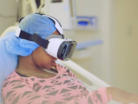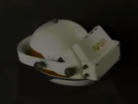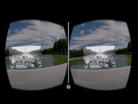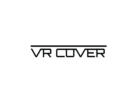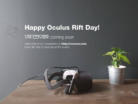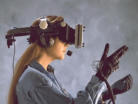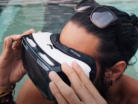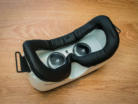Prescription Lenses in VR
June 18, 2016VR,virtual reality,HTC,Vive,Oculus,Rift,prescription,lenses,glassesArticles
![]()
One of the most important aspects of virtual reality is the visuals. Without those you just have a set of headphones. But if you are someone who needs glasses to bring reality into focus, you might find VR less than accommodating.
If your frames are small enough then you can cram them into the Oculus Rift or the HTC Vive, but if you do you may wind up scratching your lenses and forever marring your VR experience. Do what is a glasses wearer supposed to do?
Well, the first thing that you should do is try the headset without using you glasses. Many people have been reporting that they were surprised to find they didn’t even need their glasses in VR. In fact, I am one of the people who wears glasses for real reality, but finds them unnecessary in virtual reality. However, if you try this and find that things are still blurry and no amount of IPD or lens depth adjustment seems to help, then you will need something else.
You may be thinking that you could use contacts. And that is true, you could. But unless you are already using contacts it’s an expensive option and if you are like me and astigmatism is your problem, it can be even more expensive. On top of that, a common complaint with contact lenses is that they dry your eyes out which can result in very sore eyes.
So, you don’t want to risk ruining your glasses or VR headset lenses or dealing with the potential discomfort of having the facial interface on the headset press your frames. You also don’t want the cost and bother of getting set up with contact lenses which will only dry your eyes out anyway and lead to shorter sessions and sore eyes. You also probably don’t want to shell out another four-thousand dollars for Lasik eye surgery. There is still one more option. Adding your prescription lenses to your VR headset.
VR Cover has joined with Gauss Eye wear to create VR Lens Lab (https://vr-lens-lab.com/) which has designed easy to use lens inserts for the HTC Vive and Oculus Rift. They simply click into place inside the headset and once inserted they hold themselves in place. You can order your prescription right on the website with various optional coatings and have them delivered to your door. It is the most economical way to ensure that you are getting the best experience possible with your VR headset. And if you want to show of your headset, simply take them out.
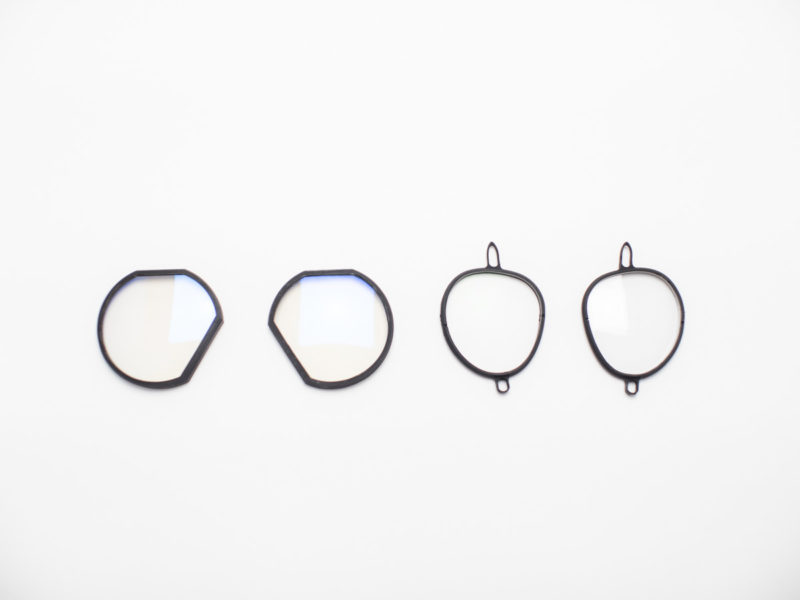
Bringing your glasses into your VR headset will ensure that you are comfortable, but comfort isn’t everything. Hygiene is also important. Once you have your prescription lenses head over to VR Cover (https://vrcover.com/shop) and pick up some covers to ensure that the facial interface on your Rift or Vive remains like new while your face is protected from the grime and germs that are sure to show up after continued use.
How to set up a VR Space - HTC Vive
Setting up a space for VR will be very much dependent on which headset you have. The space requirements for the Vive can be much more than that of the Rift. This guide is here to help you determine what you need when setting up for your room of the future.
The Vive can be set up for standing room only, but that’s not what the Vive was built for. If you want the best use out of the Vive you are going to want to set up what has been dubbed roomscale. Roomscale refers to a set up that allows you to walk around your physical play space and have that movement translated into the virtual world. You can scale this play space but is has a minimum requirement of 1.5m x 2m which is pretty sizable. This area has to be clear of furniture and anything else that you might trip over or walk into while in VR.
You also need to set up your lighthouse base stations at diagonal corners of your play space so that they can see each other. There can be nothing ocluding the view of one to the other. In the event that this is not possible there is a sync cable that you can run between them. If you have low ceilings or something hanging from the ceiling in your play space this may be necessary for you, but as that means you will have a wire stretching across your room that you either have to figure out how to hide or else just leave it sitting there messing up the space, going wireless is the best option if at all possible.
There are various options for setting up your Vive base stations. The first, cheapest and easiest option is to use the mounting hardware come in the box and screw your base stations to the wall at the corners of your play space. But if you can’t because there are no walls there, or the walls are concrete, or you just plan on travelling with your Vive a lot and mounting and unmounting the base stations on the wall is both impractical and unappealling then you can mount them on a standard camera tripod. These take up more space, but they are more portable and they will save your walls. I have seen it recommended that you could use 3M Command Adhesive Strips, but I wouldn’t advise that as the base stations are pretty heavy, they vibrate and if you’ve set them up properly, the floor is a long way down should the adhesive let go and your base stations fall to the floor.
A nice, but not necessary touch to add to your play space is a mat that is the same size as your playable area. This is a good way to indicate to others in the household where things should not be placed, as well it will give you some tactile feedback about your play area.
Finally, you’re going to want to show off your Vive once it is set up. That means passing the headset from person to person. The Vive comes with 2 facial foams but even then, it won’t be long until you are strapping a pad to your face that is soaked through with the sweat. To prevent this from happening and increase the life span of your Vive facial foam you can grab a VR Cover. There are several varieties to fit different situations. For comfort we have cotton covers and 18mm Memory Foam replacement pads. For large conference demos or just showing off to your excessvely sweaty friends, we have waterproof covers, which include the 18mm Memory Foam replacement pads.
Head on over to https://vrcover.com/shop to grab your VR Cover for your Vive, Rift or Gear VR.
VR in Medicine
Virtual Reality is a versatile medium. Previous articles have shown how VR can be used for more than just gaming, but you may still be left with the impression that VR is a fun toy, something to play with but isn’t of any practical value. This article will dispel that idea by showing that not only can VR have use outside of pure entertainment, but that it can in fact be very beneficial. While there are several ways in which this can be demonstrated, the focus here is on VR in medicine.
Virtual Reality is young and so is its presence in medicine. VR could become a very important part of all aspects of medicine in the future but perhaps the place that is currently most affected is medical training. Virtual reality is providing opportunities to train in ways that might not have been possible before. For example, when used for CPR training participants felt more connected to the virtual victim than when they just watched on TV and as a result they felt better prepared for the real thing. VR will also help doctors to train for potentially dangerous procedures that previously would have had to be practiced on live patients while procedure is being performed. An example of such training would be for intubation. This is something that can’t be practiced on a cadaver because the patient has to be sitting up but VR allows doctors in training to practice without having to do it on live patients and risking tracheal perforation.
At the present time VR is mostly used for training but it will be used for diagnostics as well in the not too distant future. One area that will be greatly impacted is telemedicine. Telemedicine allows doctors and nurses to provide healthcare from a distance using telecommunication technology. The practice has existed for quite some time, having been practiced with phones and radios in the past and more recently with video calling. But advances in virtual reality have allowed doctors to be virtually present in a much more real way and work is being done to let doctors touch and feel patients while on opposite sides of the planet. Already there are things that doctors can look for in VR without having to be in the same space as the patient. VR will also allow doctors to work on patients with highly contagious diseases without being put in danger themselves.
Surprisingly, virtual reality has been shown to be as good or better than drugs for pain management. In 2008 Lt. Sam Brown was deployed to Afghanistan where on the last day of his mission his Humvee ran over an IED and he was set on fire winding up with 3rd degree burns over 30% of his body. During recovery he endured more than twenty-four painful surgeries, but the worst part was wound care and physiotherapy. He was concerned that he might become addicted to pain killers so his doctor suggested he try a virtual reality game called Snow World.
Snow World is a game that involves travelling through a frozen environment tossing snowballs at penguins, snowmen, wooly mammoths and other surprises all while listening to the music of Paul Simon. The idea is that patients have their senses overloaded with the game and music so they don’t have enough attention to focus on the pain while they are being treated. It might sound like ridiculous pseudoscience, but it actually works. Not only do patients report much less pain while in the game, but brain scans indicate much less pain activity in the brain while in the game. In fact it seems to work as well or better than pain medicine.
But VR isn’t only useful when dealing with physical pain, it is actually being used to deal with mental pain as well. Psychologists are experimenting with VR to treat patients with anxiety, phobias and PTSD. Fernando Tarnogol, a psychologist from Argentina, designed a program called Phobos which combines virtual reality and exposure therapy. It is used to treat phobias and anxiety disorders by exposing the patient to different types of stimulus in order for them to learn to manage their anxiety.
Cedars-Sinai Medical Center uses Gear VR to transport patients to other places, even other worlds. They also have videos about art and creatures under the sea. The idea is to “find ways to use technology to improve the value of care at Cedars-Sinai and beyond.” This isn’t just about making the hospital stay more pleasant, it is also about making it more affordable by reducing the resources that are used or shortening the length of stay for patients.
Sources:
Wikipedia: https://en.wikipedia.org/wiki/Telemedicine
Virtual Reality: Just What the Doctor Ordered? https://www.youtube.com/watch?v=qn1mHMr0y-s
Virtual Reality | Cedars-Sinai: https://www.youtube.com/watch?v=zpcNhnU-Aaw
Real Future: The Amazing Future of VR Medicine: https://www.youtube.com/watch?v=tcc0h_W2Sa4
Wounded soldier uses video game to ease pain: http://www.nbcnews.com/video/rock-center/49849152#49849152
Firsthand: http://www.firsthand.com/portfolio/pain.html
NASA and VR
Do you like space? Like, outer-space? Do you believe that going there and exploring is important to the future of humanity? I guess these days we have to ask the question, do you believe it exists? If not, this is probably not the article for you. For the rest of us, we owe a great debt of gratitude to agencies like NASA for making it their mission to cross the final frontier. And, to a lesser extent, agencies like NASA owe a debt, even if only a tiny one, to Virtual Reality.
Okay, to say that NASA owes a debt to VR may be reversing the situation, but NASA has certainly put VR to use and VR has helped to make space travel and the jobs that need to be done up there a bit safer by allowing astronauts to train on earth for their duties in space.
NASA has used virtual reality since at least the early 90’s when their virtual environments consisted of wire frame models only. Since then they have continued to upgrade their equipment. They now have a VR room with a bespoke VR set up that even has tracked gloves with pressure sensors on them to know when the astronaut is gripping something. In this room are physical representations of virtual objects, which are themselves representations of the real objects they will have to work with in space. These objects are hung from wires and pulleys so that moving them is similar to moving an object in space where it will have mass and all of the forces that go with it, but not weight. This, combined with a fully accurate virtual representation of their workspace is the closest thing the astronauts have to doing the real thing here on earth where a mistake isn’t going to cost a lot of money or human life.
More recently NASA has been using VR to visit Mars before making the trip there in real life. They have partnered with MIT and fusion.net to create the Mars 2030 Experience which allows them to simulate life on Mars and, with the help of physics simulations, allows them to test vehicle performance. The Martian landscape was created from years of Mars surface architecture studies and is as accurate as it can be based on current information. But this isn’t only a tool for NASA. It will be an experience we can all enjoy if we have the equipment to do so. The Mars 2030 Experience is to be released for free through Steam VR and fusion.net for the Oculus Rift, HTC Vive as well as other platforms.
NASA has shown that VR is more than just a plaything. In fact, it was a tool at the beginning and only became a plaything later. During the early days of VR, devices were quite expensive ranging from 50,000 to 200,000 dollars. Thanks to the popularity of video games the components required to make VR work well have significantly dropped in price making VR far more ubiquous and impressive. In the beginning I said that NASA owed a debt to VR, the truth is, VR owes a debt to NASA and other research agencies who kept VR alive for research purposes when the rest of the world wrote it off as a failed experiment.
Sources:
1980’s Virtual Reality – NASA Video:
https://www.youtube.com/watch?v=NAuytnYU6JQ&
Mars Immersion: NASA Concepts Bring Precision to New Virtual Reality Experience:
http://www.nasa.gov/feature/nasa-concepts-bring-precision-mars-to-virtual-reality
Education in VR
Educaton has changed very little since it became widespread 150 – 200 years ago. Since the beginning it has involved teachers, classrooms, desks, chalkboards and books. Advances in technology and population growth have changed some of the tools, but the methods have largely remained the same. For example, it isn’t as common for the entire school to sit in one classroom under one teacher, instead we have large schools with many classrooms for each grade and many teachers. No longer are notes taken on slates with chalk. Instead, pencils, pens and now even notebook computers and tablets are where we store lecture notes and work out our problems. Computers are frequently used to try to make learning a bit more entertaining by making games out of it. But the games either rely on having already been taught the material in class or else if the game teaches it, it does so in very much the same way that a book or the teacher on the blackboard would. So rather than being an educational tool, you could say that it’s more like a study tool.
I’m not knocking these advancements or education in general. But the world has changed an awful lot since the school system was created and education of the future is going to need more than just new tools to do the same old things. The world has never been static. Each generation added to our body of knowledge, but the rate at which these additions were made has not remained the same. At one time you would go to school and learn the facts that would get you through a life that generally consisted of one job and a family. For better or for worse, life is not like that anymore and storing facts in our brains is less important than learning to adapt, take risks, problem solve and plan a few steps ahead.
Virtual Reality is already being adapted for education. In a YouTube video put out by AMD (see sources below) one math teacher speaks of using virtual reality to demonstrate mathematical functions in a class or two that took him a year in University to be able to imagine and get his mind wrapped around. Being able to physically manipulate 3D coordinates in real time as the students watched made the lessons much easier to grasp.
In another video from TEDxCERN, Michael Bodekaer speaks about the use of virtual reality for science education. He lamented that students were bored in science class, often wondering why they were learning the things they were being taught. To solve this problem he made a virtual labroatory that gave access to top of the line science equipment and gamified the learning process by tasking students with solving a murder. If you have a Gear VR you can actually try a demo of the experience by searching for “Labster” in the Oculus store. Studies have been conducted by learning psychologists from Stanford, as well as Technical University in Denmark. In these studies they took 160 students, gave them a test then divided them in half and taught one group using only traditional methods and another group using only the virtual labs and then gave them a test at the end. The group that used only the virtual lab showed a 76% improvement in learning effectiveness. A further study combined the virtual laboratory learning with more traditional teacher led learning and found a 101% increase in learning effectiveness.
That may only be one study, but with results like that it certainly demands a deeper look. If we can double the effectiveness of our education by using virtual reality to augment the classroom experience with more practical, virtual experiences then it’s something that needs to be developed. And VR is still in the very early days. It’s only going to get better and more realistic and as it does virtual experiences will become more useful, and possibly just as useful as real situations, while being safer and cheaper.
Another way that VR is currently being used in education is through programs like Google’s Expediditions. With Expeditions, teachers can order the program from Google which comes with Google Cardboard headsets and VR capable devices for the students and tablet for the teacher. She is able to read the information off of the tablet while guiding the students through virtual tours of various places that they would otherwise not be able to go, places like Mars or the pyramids of Egypt. The teacher is able to draw the students attention to certain points of interest by touching them on the tablet and a marker then shows up in their experiences. This type of activity engages the students is ways that looking at a book will not. Being able to look down at Martian soil and then look up at the Martian sky is something completely unique to VR. Standing at the base of the Great Pyramid and craning your neck to see the top and realizing as you do just how big it really is will cement the idea in the students mind far better than the old tactic of drawing the pyramid next to a sky scraper, a whale, an elephant and a person.
There are certainly many more ways than just these to use VR for education and there will be more in the future. As VR develops and becomes more ubiquitous and VR cameras improve it could even become possible to attend school remotely and feel as though you are actually there. Or, instead of having a friends bring your homework home from school you could log on to the schools website and download the day and attend in VR when you feel better. This sounds like one of those old timey, black and white futurust videos from the Worlds Fair, but this isn’t wild fantasy. This could happen if the tech we have now improves. It’s possible, maybe even likely, that whatever VR education becomes in the future it will make my ideas seem just as quaint and ridiculous as those old videos that predicted women’s dresses adjusting to the time of day, but I only suggest it to get you thinking about the sort of things that will be possible very soon. It’s enough to make me want to do school over again.
Almost.
Sources:
VR In The Classroom: Early Lessons Learned from Google Expeditions:
https://www.youtube.com/watch?v=UuceLtGjDWY
These Two School Districts Are Teaching Through Virtual Reality:
http://fortune.com/2016/02/25/school-districts-teaching-through-virtual-reality/
VR in Education
https://www.youtube.com/watch?v=EXYzj6qwCCk
Reimagining education | Michael Bodekaer | TEDxCERN
https://www.youtube.com/watch?v=IYpovgka-9Q
How to clean your Oculus Rift and HTC Vive
We expect virtual reality to revolutionize the gaming industry. Now that several VR headsets are available, more consumers can get their hands on this amazing technology. But some issues have been around since the beginning of time, and continue to plague VR users today. Such as bacteria. After you wear the headset for a few hours, or after a few days, it’s likely that these creatures will grow, especially on the foam cushions that touch your face.
The Oculus Rift foam, Gear VR foam, or HTC Vive foam can all be affected by sweat, which starts to have an odor when mixed with bacteria. How do you clean the VR headset’s foam?
We can help with that at VR Cover, and here is how: Our convenient covers keep your virtual reality headset clean and comfortable, by sliding over the foam areas to prevent them from having direct contact with your face. Much like a pillowcase, you can wash it with your regular laundry.
But let’s talk about the general problems and solutions to virtual reality headset hygiene. First, be aware that many sweat glands lie in the areas where these pieces of foam touch your face, so you want to be diligent about keeping your face as clean as possible.
Try cleaning your face with an antibacterial cleaning wipe before you put on the headset. You might even want to wear a headband or bandana when using your VR headset, to prevent sweat from running down into your face. And ladies, you probably want to forgo wearing makeup when you’re going to use your VR headset.
Oculus Rift Cleaning Instructions
The Oculus Rift foam stays attached to the headset, so here are some options for cleaning it:
A soft cloth to remove sweat and oils helps keep the foam clean. You can also use antibacterial wipes, but choose some made without alcohol or other abrasive ingredients. We recommend you not use any alcohol on your Oculus Rift foam.
You’ll want to clean the foam after each use, and make sure it’s completely dry before you use it again. But we don’t recommend using a hair dryer, or letting it dry in direct sunlight, which can degrade the material. See here for further Oculus Rift cleaning instructions.
Users of paintball helmets, and related activities, have dealt with this problem also, and some advice for them would apply to the VR headsets. One of their suggestions involved storing your helmet, (or VR headset) in an area with good air circulation. Keeping it in a trunk or closed up in a tote bag can contribute to odors.
HTC Vive Cleaning Instructions
In the User Guide, HTC Vive recommends that you remove the foam and clean it with a cloth and cold water. Gently wipe the area you want to clean, but don’t soak it in water or run water over it. Don’t use any kind of bleach. We recommend avoiding alcohol to clean the HTC Vive foam, as well.
After cleaning it with the cloth, simply let it air dry. Avoid exposure to direct sunlight, and don’t put it in the dryer.
At the end of the day, you have choices for how to keep your Virtual Reality headset clean. We at VR Cover strive to make things easier for you; have a look around the VR Cover website to see some options. With a few precautions, you can keep your VR headset clean and sanitary, so you can enjoy many hours of using it!
Oculus Rift VR Cover launch, really soon!
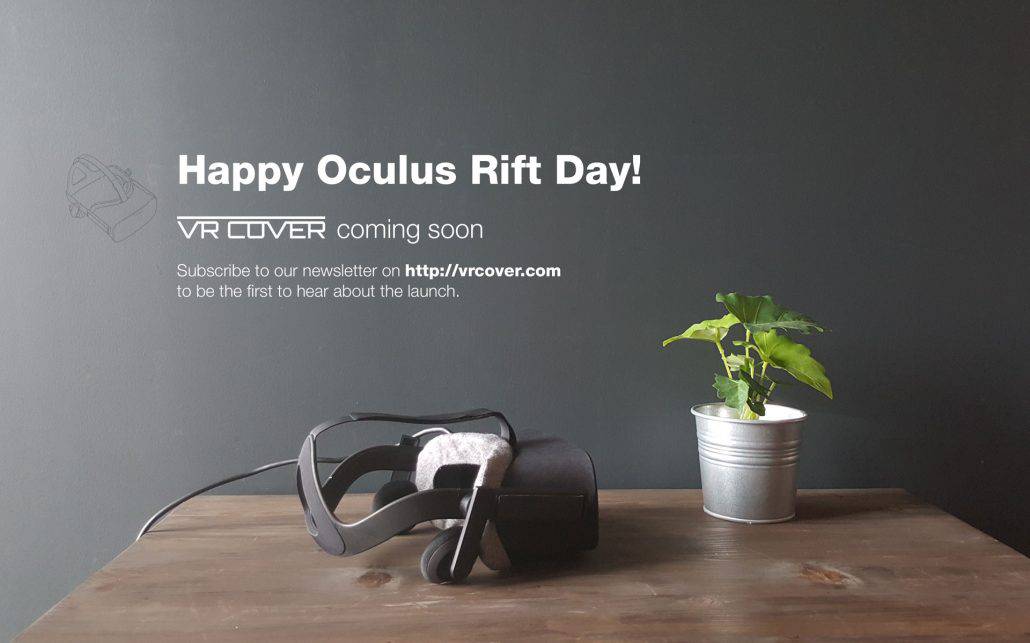
The good people at Oculus have been so kind to send us an Oculus Rift to work with. There were a couple of delays but it finally came through not too long ago. In any case, we are already ramping up production so please make sure you are subscribed to our newsletter (signup in the sidebar) to hear about the launch first.
The Year of VR Hygiene
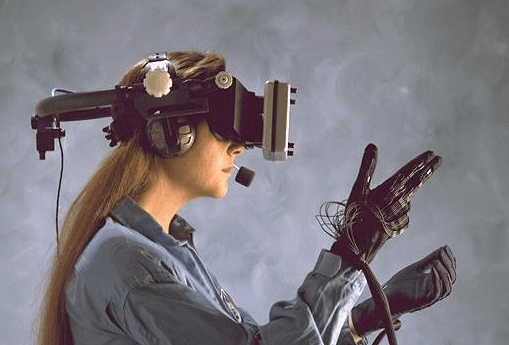
In spite of the fact that Virtual Reality seems to be taking over the world, it still has it’s share of naysayers. There are still those hangers-on who refuse to see the reality that is staring them in the face… pun absolutely intended. Most of these people must by now realize that they were wrong to doubt the successful resurgence of VR and they are simply holding their position in the faint glimmer of hope that this raging behemoth of an industry will trip over it’s laces and fall flat and they won’t have to admit they were wrong. With all of the major tech players involved, including Oculus, HTC, Valve, Sony and Google, that glimmer of hope now seems like a figment of their imagination. But there is one thing that could still kill VR before it has the chance to mature. Cooties.
That’s right, cooties. Germs. Disease, Gnarly funkage. Whatever you want to call it. These headsets can become filthy after prolonged use and possibly even spread disease. And though you probably received several cootie shots when you were in public school, you are going to want better protection than that. If this headset is going to be pressed against your face then you are going to want to be sure that it’s clean.
Imagine you went to a hotel and when you went into your room the pillows had no pillow cases on them. You call down to the front desk to let them know the mistake and they tell you that they don’t use pillow cases. I think most people would either check out immediately and find a new hotel or else sleep without a pillow. The thought of laying your head on something that countless other people have used with no protective barrier is revolting. And yet, out of box, the situation is very similar for users of VR headsets like the Oculus Rift or the HTC Vive.
Oculus and HTC have put a good deal of thought into the ergonomics of their headsets in order to ensure that they are comfortable. HTC has their thick, formed facial foam that provides a good amount of padding and Oculus, while not as thick, uses two layers of foam to provide comfort. The problem with both of these headsets is that the designers did not seem to take into account just how hot it can be inside these units, especially on a crowded show floor or in the heat of midsummer. Sweat happens in these cases and that facial foam becomes like a sponge, sucking up the dirt and grime that the sweat is gathering off of your face and the face of the other people who have used the headset.
While hygiene of the entire unit is important, especially when demoing to a lot of people, the most important area when it comes to cleanliness has to be the facial interface. It’s vital to make sure that this area is easily washable and the best way to do that is to cover it with a washable sleeve that can be removed, or better yet, that doesn’t have to be because the cover itself can simply be wiped down with an antibacterial cloth. If the entire padding can be made washable and removable, even better.
2016 looks to be shaping up to be the year of VR, what with companies like Facebook’s Oculus and HTC having already released their headsets, Sony set to launch theirs in the coming months and even Google getting into the game this fall with their Daydream VR standard. It seems that our future is going to be full of pressing our faces into these machines to do everything from play video games, to watch movies to shopping. So maybe we should also try to make sure that 2016 is the year of VR hygiene as well.
To make sure that your headset is ready for the Year of VR Hygiene, visit our store.
Virtual Reality Headset Hygiene Best Practices
The general consensus is that by and large the troubles plaguing virtual reality in the past are behind us. Time will tell if virtual reality finally achieves the place in the home so many, including us, believe it deserves, but there is yet one hurdle that doesn’t get a lot of attention.
Hygiene for Virtual Reality Headsets
So you have everything ready to go for an extended VR demo session. You have two people on one virtual reality demo station. One person fixing up the computer, launching the demos and talking to people and one person managing the cable jungle and cleaning the headset in between uses. Great!
We had a look at some studies related to headset and office hygiene to give you an idea why cleaning your VR HMD in between uses makes sense.
Dr Charles Gerba, a microbiologist at the University of Arizona conducted a study analyzed 7,000 samples from offices around the USA. The study found that the highest form of germ contamination areas were telephones, desktops and keyboards. Surprisingly, toilet seats consistently had the lowest bacteria levels of the 12 surfaces tested. Microbiological populations found include potentially dangerous and contagious organisms like E.coli, Klebsiella pneumonia, Streptococcus and Salmonella. The same bacteria can be found on telephones, and ear cushions.
The study got commissioned by a major clean wipes company but you get the idea. There are some nasties out there.
Gupta, Wantland and Klien (1996) suggest that much of the peripheral equipment used in VR are potential fomites. A fomite is a harmless object that is able to harbour pathogenic organisms and therefore, may serve as an agent for the transmission of infections. They go on to suggest that airborne pathogens and skin flora thrive in environments similar to those of HMDs and hand controller devices.
So what kind of infectious disease can be spread by sharing VR headsets?
The most common infectious diseases and are usually transmitted by close contact with the saliva or nasal secretions from an infected individual are influenza, strep throat, pink eye, and meningitis. Because of the enclosed nature of HMD’s they can become quite warm causing the user to sweat and this can be exacerbated if the user is forced to move around while playing.
Here are some suggestions for keeping your headset clean and in good shape even when showing it to hundreds of people:
- Wipe the lens and foam using a microfiber cloth, the same kind you would use to clean glasses or a computer screen. Dab the cloth into water or soapy water, when necessary. Even better get one of our waterproof VR Cover that are easier to clean.
- We recommend you wipe our waterproof VR Cover with non alcoholic anti bacterial wipes after every user and use alocholic wipes just every 10 – 15 users. The residue from alcoholic wipes can be a bit harsh on some people’s skin.
- Use watch glass protectors or some other form of plastic to cover the lenses. This can help to prevent scratches.
- Keep your VR headset somewhere where it won’t collect dust, use a can of compressed air to blow it out of any nooks and crannies.
It is important for the life of your HMD that you take care of it, store it properly and keep it clean. But beyond just ensuring you get the most use possible out of your purchase before having to replace it, it will also ensure that you and your users remain healthy and free of unpleasant illnesses.
New Gear VR Face Foam Cushioning Replacement
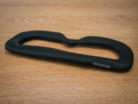
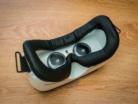
We have been working on far more hygiene solutions for VR than our virtual reality headset covers in the last 16 months since we started this project but it was never the right time to release what we worked on. This changes this year with the release of consumer virtual reality devices such as the Gear VR, Oculus Rift and HTC Vive.
Today we are happy to launch a face foam replacement for the Samsung Gear VR.
Our VR Cover foam padding can be used instead of the original foam padding that was shipped with the Gear VR. It comes in a set of two. If you show your Gear VR to someone, one foam padding can be on the Gear VR while you quickly wipe down the other one before you replace it for the next person who wants to try the Gear VR.
The foam padding is made from a soft leather like material that is pleasant to wear and easy to clean.
